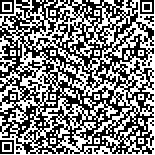| 本文已被:浏览 1148次 下载 747次 |

码上扫一扫! |
| 干旱胁迫下玉米叶-气温差与叶温差日变化特征及其品种差异 |
|
刘云鹏1, 申思1, 潘余强1, 张莉1, 林珊1, 薛盈文1,2, 周顺利1
|
|
|
| (1.中国农业大学 农学与生物技术学院/农业部农作制度重点开放实验室, 北京 100193;2.黑龙江八一农垦大学 农学院, 黑龙江 大庆 163319) |
|
| 摘要: |
| 为进一步明确玉米叶-气温差和叶温差日变化特征及其对干旱的响应与品种差异,通过人工旱棚控水,设置充分供水、轻度胁迫、中度胁迫和重度胁迫4个土壤水分处理,研究5个玉米杂交种功能叶片表面温度及环境光温湿度日周期变化特征,比较分析了不同生育时期叶-气温差和叶温差的变化特性及其与环境因子的关系。结果表明:1)叶-气温差是衡量玉米水分丰缺状况的1项有效指标。在充足供水条件下玉米叶-气温差较为稳定,维持在-4.0~-1.0 ℃范围内,干旱胁迫下均表现出升高趋势,重度胁迫与充足供水处理之间的差值可达5 ℃以上,且多出现于12:00—16:00;2)叶温差日变化表现为先升高后降低趋势,并随着干旱胁迫程度的加大而增大;3)干旱处理叶-气温差与光合有效辐射和大气温度的相关性高于空气湿度和饱和水汽压差,均达到显著或极显著水平;4)杂交种间叶-气温差差异不显著,叶温差则差异显著,但不同时间和不同生育时期表现不一致。总之,梯度土壤干旱胁迫导致了叶-气温差和叶温差的逐级升高,叶-气温差可有效反映玉米植株水分丰缺状况,而叶温差在玉米抗旱品种筛选方面的意义尚需进一步研究。 |
| 关键词: 玉米 干旱胁迫 杂交种 叶温差 光温湿度 |
| DOI:10.11841/j.issn.1007-4333.2014.05.03 |
| 投稿时间:2014-01-30 |
| 基金项目:国家公益性行业(农业)科研专项(201203031);国家玉米产业技术体系(CARS-02-26) |
|
| Diurnal variation in leaf-air temperature difference and leaf temperature difference and the hybrid difference inmaize under different drought stress |
|
LIU Yun-peng1, SHEN Si1, PAN Yu-qiang1, ZHANG Li1, LIN Shan1, XUE Ying-wen1,2, ZHOU Shun-li1
|
| (1.College of Agronomy and Biotechnology/Key Laboratory of Farming System of Ministry of Agriculture, China Agricultural University, Beijing 100193, China;2.College of Agronomy, Heilongjiang Bayi Agricultural University, Daqing 163319, China) |
| Abstract: |
| In order to clarify the characteristics of maize leaf-air temperature difference (LATD) and leaf temperature difference (LTD) during diurnal period, and their response to drought stress and the difference among varieties, four gradient soil moisture (adequate water supply, mild stress, moderate stress and severe stress) were provided by independent pool with rainproof shelter, the temperature of functional leaves of five maize hybrids and the environmental light, air temperature and humidity in a day were determined, and the diurnal variation of LATD and LTD at three growing stages and their relationship with environmental factors were studied.The results showed that:1) LATD could be an effective index to measure maize plant moisture status.LATD was stable at the treatment of adequate soil water supply, mostly in the range of -4.0--1.0 ℃.An increasing trend was observed following soil drying in LATD.The difference of LATD was up to 5 ℃ between the treatments of severe stress and adequate water supply, which occurred at 12:00 to 16:00 in a day.2) Diurnal variation of LTD presented a single peak curve and the peak value increased with the drought stress enhancing.3) Under drought stress, LATD was more significantly correlated with photosynthetically active radiation (PAR) and free-air temperature (Ta) than relative air humidity (RH) and vapor pressure deficit (VPD).4) In contrast to LATD, there was significant difference in LTD among hybrids, but the performance was different for a hybrid at different determined time or stage.In conclusion, our results indicated that gradient soil drought stress could increase LATD and LTD step-by-step.LATD could reflect the plant water status effectively, but more studies should be carried out for the LTD used as a reliable indicator in selecting drought resistant variety in maize. |
| Key words: maize drought stress hybrid leaf temperature difference environmental factors |